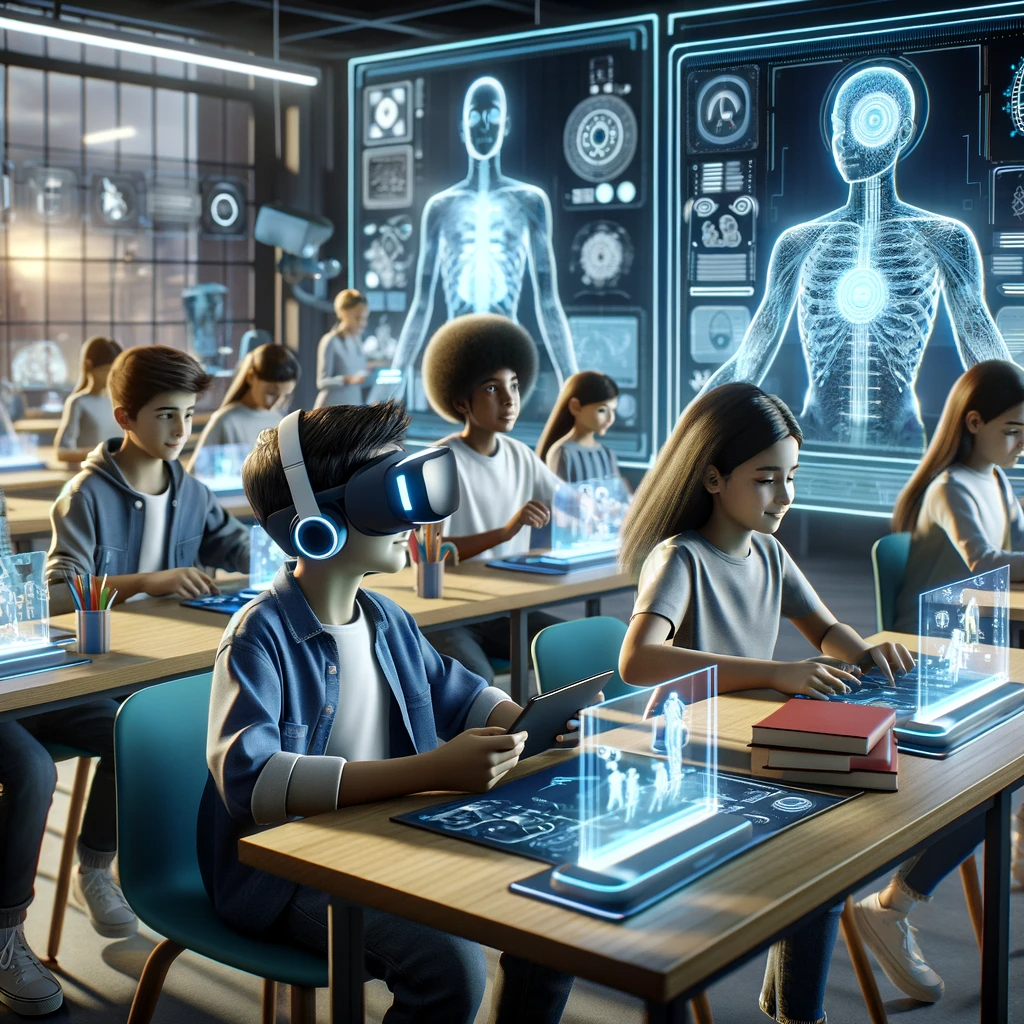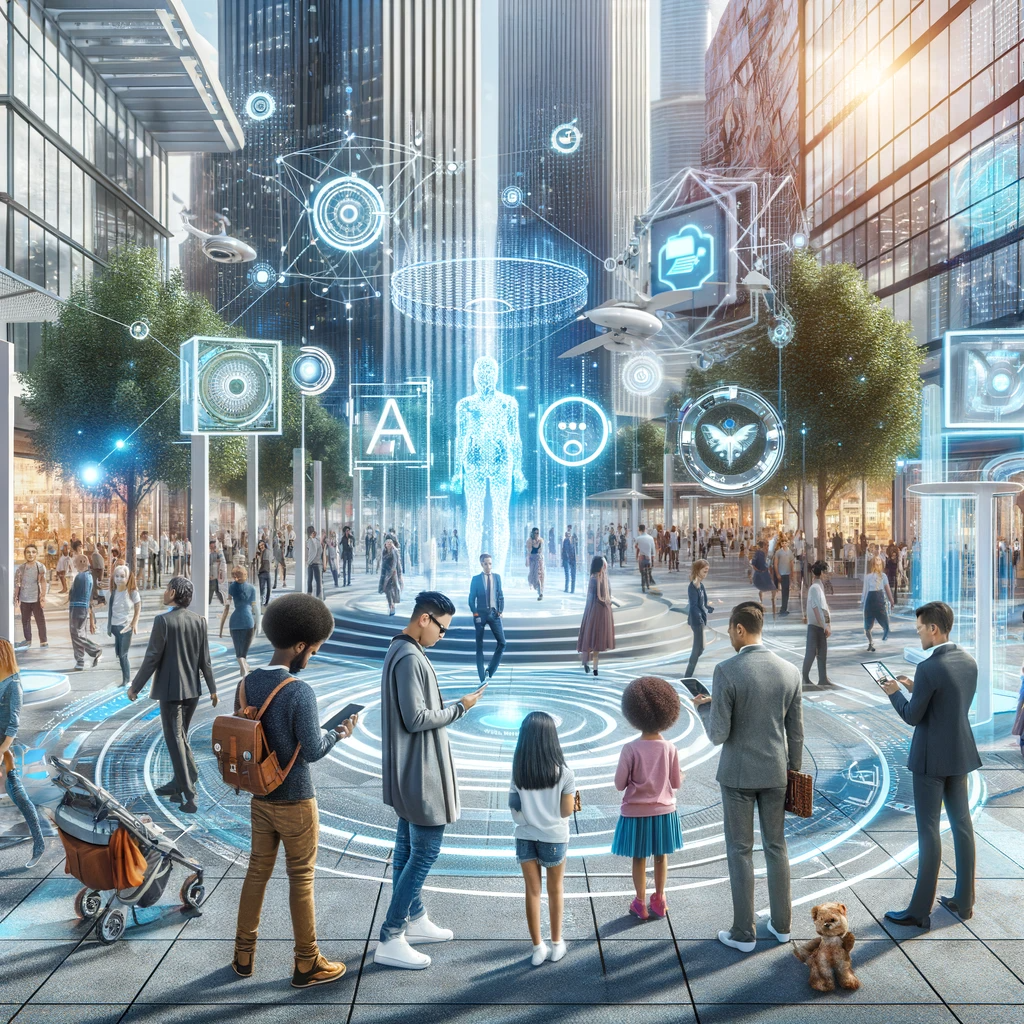The evolution of user interfaces (UI) has been a journey of making technology more accessible and intuitive. From the early days of punch cards and command-line interfaces to the graphical user interfaces that heralded the personal computing revolution, each step has brought technology closer to the natural human modes of interaction. Today, we stand on the brink of a new era, thanks to the integration of Artificial Intelligence (AI) into UI design. AI is not just enhancing existing interfaces; it is redefining the ways we interact with our devices and digital environments.
This transformation is most evident in the emergence of voice-controlled AI, brain-computer interfaces (BCI), and immersive experiences through virtual and augmented reality. These technologies are not mere incremental improvements but represent a paradigm shift in interaction. Voice-controlled AI, like Amazon’s Alexa and Apple’s Siri, has brought technology into our conversations. BCIs are promising a future where thoughts alone can control our digital world. Meanwhile, virtual and augmented reality are blending the physical and digital realms in ways previously only imagined in science fiction. This article delves into these cutting-edge advancements, exploring how they are shaping our interaction with technology and what the future may hold for AI interfaces.
The Rise of Voice-Controlled AI Interfaces:
Voice-controlled AI interfaces have transitioned from a futuristic concept to an everyday reality in just a few years. The journey began with basic voice recognition systems that could understand simple commands. However, with advancements in natural language processing and machine learning, coupled with increased computational power, these systems have evolved into sophisticated AI assistants capable of understanding and executing complex requests.
Examples such as Amazon’s Alexa and Apple’s Siri demonstrate the success of voice-controlled AI. These assistants have become integral to many people’s daily lives, helping with tasks ranging from setting reminders to controlling smart home devices. This section could include case studies highlighting their development, adoption, and impact on user interaction.
Looking ahead, future trends in voice-controlled AI are likely to focus on enhancing conversational abilities, context understanding, and personalization. However, these advancements come with their own set of challenges. Privacy concerns, particularly regarding data collection and processing, are paramount. Additionally, ensuring this accuracy and adaptability to diverse accents and languages remains a significant hurdle. This part of the article would explore these challenges and the considerations that must be addressed to continue the evolution of voice-controlled AI interfaces.

Brain-Computer Interfaces: The Next Frontier:
Brain-computer interfaces (BCI) represent one of the most exciting frontiers in AI interface development. BCIs connect the human brain directly to computers, allowing for control of devices or communication without physical movement. This section would introduce BCIs, their basic principles, and historical development from early research to current state-of-the-art technologies.
Key players and projects like Neuralink and BrainGate have been pivotal in advancing BCI technology. These initiatives could serve as case studies to illustrate the current capabilities and future potential of BCIs. The applications of BCIs are vast, from providing communication methods for individuals with severe disabilities to enhancing gaming experiences and even potential uses in everyday communication.
However, BCIs also present unique ethical and technical challenges. Issues of privacy and security are critical, as BCIs involve direct access to one’s thoughts. Accessibility and inclusivity are other concerns, given the high level of technical and medical sophistication required for BCIs. This section would examine these challenges and discuss predictions for how BCIs might integrate into society and impact our daily lives in the future.
Immersive Experiences: AI in Virtual and Augmented Reality:
Virtual Reality (VR) and Augmented Reality (AR) represent the cutting edge of immersive digital experiences, and AI is playing a pivotal role in pushing their boundaries. Initially, VR and AR were about simple simulations and overlaying digital information onto the physical world. However, AI has transformed them into dynamic, interactive environments capable of personalization and complex interaction dynamics.
The current state of VR and AR is marked by notable examples like Oculus Rift and Microsoft HoloLens. These platforms demonstrate the advanced level of immersion that can be achieved, offering experiences ranging from realistic gaming to practical applications in design and education. This section could explore these examples in detail, highlighting how they leverage AI to enhance user experiences.
AI’s contribution to VR and AR is multifaceted. It enables personalization by adapting environments to individual preferences and behaviors. AI also enhances interaction dynamics by making virtual characters and elements more responsive and lifelike. This has opened up possibilities for fully immersive digital worlds where AI not only shapes the environment but also serves as an interface for human-computer interaction.
However, the widespread adoption of VR and AR faces several challenges. Hardware limitations, such as the need for powerful processing capabilities and high-quality displays, are significant barriers. Content creation for these platforms is also resource-intensive and requires specialized skills. Additionally, ensuring a comfortable and intuitive user experience remains a challenge, with issues like motion sickness and user interface design still being actively addressed.
Integrating AI Interfaces into Daily Life:
AI interfaces are increasingly becoming a part of our daily lives, seamlessly integrating into various scenarios and sectors. In healthcare, AI-driven interfaces assist in diagnostics and patient care. In education, they provide personalized learning experiences. The entertainment sector has seen a revolution with AI in gaming and content recommendation, while retail benefits from AI in customer service and personalized shopping experiences.
The integration of AI interfaces into daily life raises important considerations. User experience and design are crucial for mass adoption, requiring a balance between human-centric design and technological capabilities. This balance ensures that interfaces are intuitive, accessible, and responsive to user needs.
Ethical implications are also a significant aspect of AI interface integration. Data privacy is a major concern, as AI systems often rely on large amounts of personal data. User autonomy and the potential for societal changes, such as shifts in employment patterns due to automation, are also important considerations.

Conclusion:
In this article, we have explored the evolution of AI interfaces, from voice-controlled systems and brain-computer interfaces to immersive VR and AR experiences. These technologies demonstrate the transformative potential of AI-driven interfaces, offering new ways for humans to interact with digital environments and each other.
As we reflect on these advancements, it’s important to balance technological innovation with ethical considerations. Ensuring that AI interfaces respect privacy, autonomy, and societal values is crucial for their responsible development and integration into society.
Looking ahead, the future of AI interfaces seems boundless. With continued innovation and responsible development, these interfaces have the potential to reshape our daily routines and interactions profoundly. As we navigate this evolving landscape, it’s important to keep in mind the need for interfaces that are not only technologically advanced but also human-centric and ethically sound.
